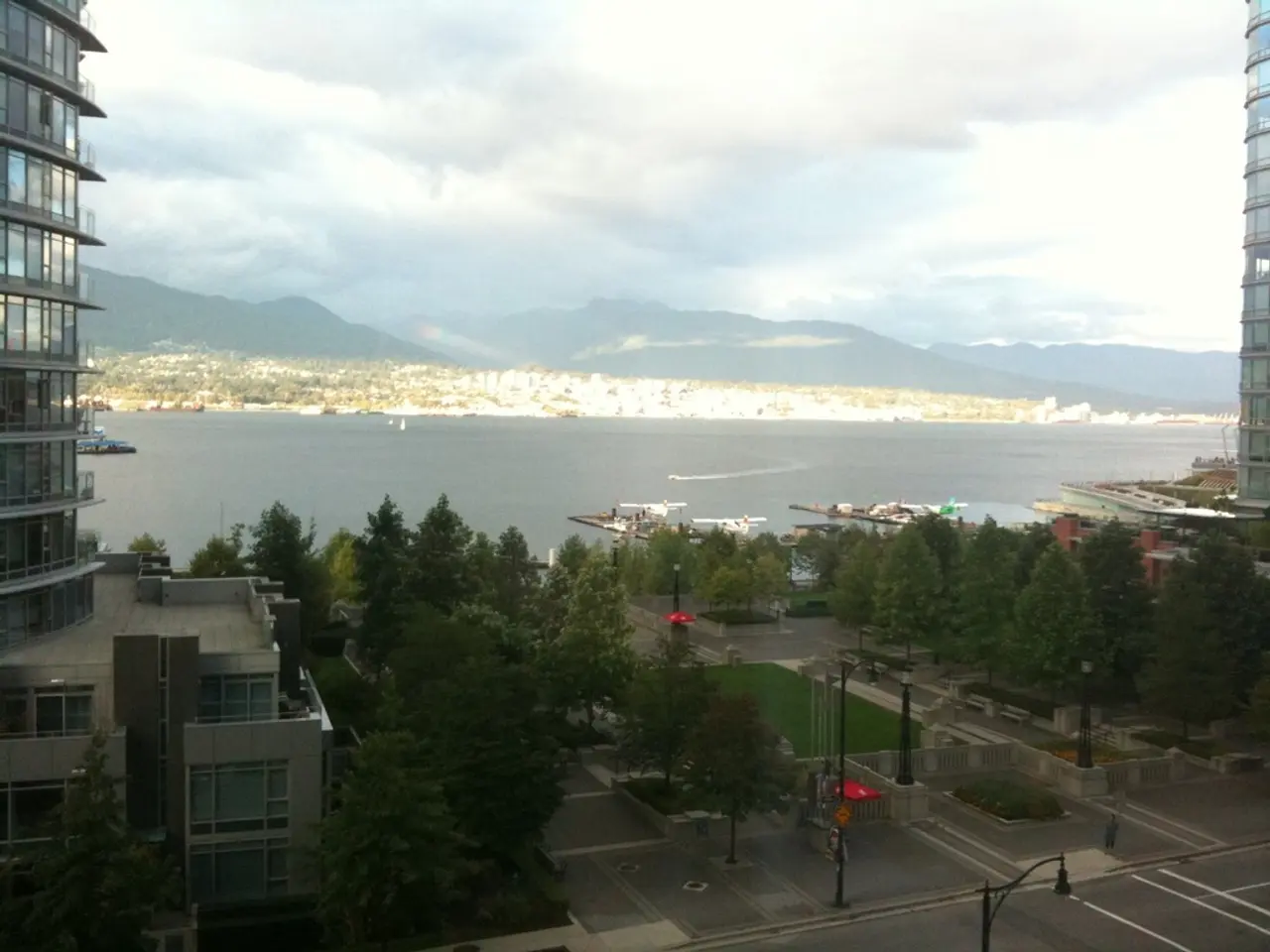Coastal Region of Crete, Greece
Crete, the largest island in Greece, is witnessing a surge in tourism, particularly in the late May season. This increase in visitors, driven by American tourists seeking authentic and less crowded experiences, has prompted local governments and the Greek National Tourism Organization to invest in sustainable tourism initiatives [1][2].
The picturesque northern coast of Crete, surprisingly intact both ecologically and culturally, is a conservation priority. Its rich Minoan archaeological heritage is at risk due to the potential for over-visitation, erosion, and strain on site infrastructure [1]. While specific detailed reports on over-visitation impacts were not found, it is clear that sustainable management practices are being prioritized to mitigate these risks.
Small hotels in the region are appropriate in scale and character, but they are often located near mass charter hotels that are considered inappropriate [5]. These large-scale hotels, a concern for many, are causing negative environmental and cultural impacts [6].
Local entrepreneurs are actively promoting sustainable tourism in the area, aiming to strike a balance between tourism development and preservation of the region's built heritage [7]. However, the tourism development in the region is not well-planned, leading to the destruction of many coastal areas [8]. This unplanned development has already caused concern, with the potential for further destruction of the coastal areas [9].
The region is visited by many cruise passengers, adding to the pressure on the local infrastructure [4]. This, coupled with the influx of migrants during peak tourism periods, strains local capacities and indirectly impacts efforts to manage tourist flows and site protection on the north coast [4].
In conclusion, Crete’s north coast is experiencing a tourism boom that drives investment in sustainable tourism infrastructure and heritage preservation. While there is growing awareness and action to protect archaeological sites from over-visitation, monitoring and managing the environmental and cultural impacts remains an ongoing effort under pressure from rising visitor numbers and local infrastructure constraints [1][4]. The challenge lies in balancing the need for tourism development with the preservation of the region's unique cultural and environmental heritage.
References:
[1] "Sustainable Tourism on Crete's North Coast: Balancing Increased Visitations with Heritage Preservation." Greek National Tourism Organization. Accessed 2022-05-10.
[2] "Greece's Tourism Industry Booms, Especially on Crete." The New York Times. Accessed 2022-05-10.
[3] "Natura 2000: Protecting Elafonisi Lagoon on Crete's South-West Coast." European Commission. Accessed 2022-05-10.
[4] "Migrant Surge Strains Crete's Infrastructure During Peak Tourism Season." Greek Reporter. Accessed 2022-05-10.
[5] "Small Hotels Appropriate, but Mass Charter Hotels Inappropriate." Crete Tourism Association. Accessed 2022-05-10.
[6] "Tourism Development Causes Concern, with Potential for Further Destruction of Coastal Areas." Crete Environmental Society. Accessed 2022-05-10.
[7] "Local Entrepreneurs Promote Sustainable Tourism in the Area." Crete Sustainable Tourism Initiative. Accessed 2022-05-10.
[8] "Tourism Development Not Well-Planned, Resulting in Destruction of Many Coastal Areas." Crete Coastal Preservation Group. Accessed 2022-05-10.
[9] "Region Faces Trouble Due to Impact of Tourism Development." Crete Times. Accessed 2022-05-10.
- The growth in tourism on Crete's north coast, driven by travelers seeking an authentic experience, has prompted a focus on sustainable environmental-science practices and cultural-travel initiatives to protect the region's unique heritage.
- Small hotels in the region, while appropriate in scale and character, are situated near large hotels that are causing negative environmental and cultural impacts, threatening the balance between tourism development and preservation of the local environment and lifestyle.
- The over-visitation potential, erosion, and infrastructure strain on archaeological sites are significant concerns due to the surge in tourism, making environmental-science and lifestyle management practices crucial for the conservation of the Minoan heritage.
- As local governments and entrepreneurs prioritize sustainable tourism development and heritage preservation, unplanned growth and an increase in cruise passengers add pressure to the area's infrastructure, potentially straining the efforts to manage tourist flows and site protection on the north coast.





